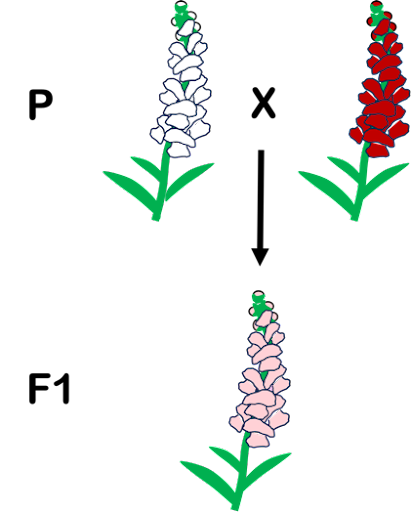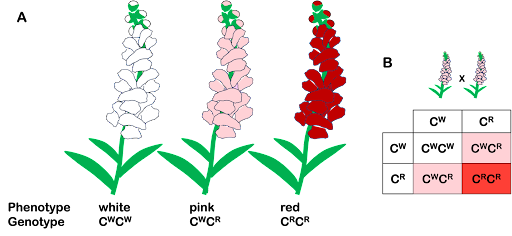Incomplete dominance

An incompletely dominant phenotype is one for which the heterozygote has a phenotype that is an intermediate between the two homozygous phenotypes. A classic example is pigment color in snapdragons and certain other flowering plants: a cross between a true-breeding plant with red flowers and a true-breeding plant with white flowers gives pink F1 offspring (Figure 3).
The parental plants are both homozygous, but the F1 is heterozygous. (Figure 4A) Because neither allele is completely dominant, slightly different genetic notation is often used. Here, CW indicates the white allele and CR the red. The pink snapdragon will never breed true: a cross between two pink snapdragons will give a 1:2:1 ratio of white:pink:red, as shown by the Punnett square in Figure B.
To tie back to earlier vocabulary: this is due to the haploinsufficiency of the red allele. The enzyme product of this gene plays a role in the biosynthesis of pigment, but two copies of the gene together produce more enzyme (and more pigment). The enzyme expressed from one allele is not sufficient to produce the wildtype phenotype. Another way of thinking about this is that the alleles are additive: one allele of CR produces light red (pink) petals. Two alleles of CR produce darker red petals.

Test Your Understanding
Media Attributions
- Incomplete Dominance © Amanda Simons is licensed under a CC BY-SA (Attribution ShareAlike) license
- Phenotype genotype © Amanda Simons is licensed under a CC BY-SA (Attribution ShareAlike) license

